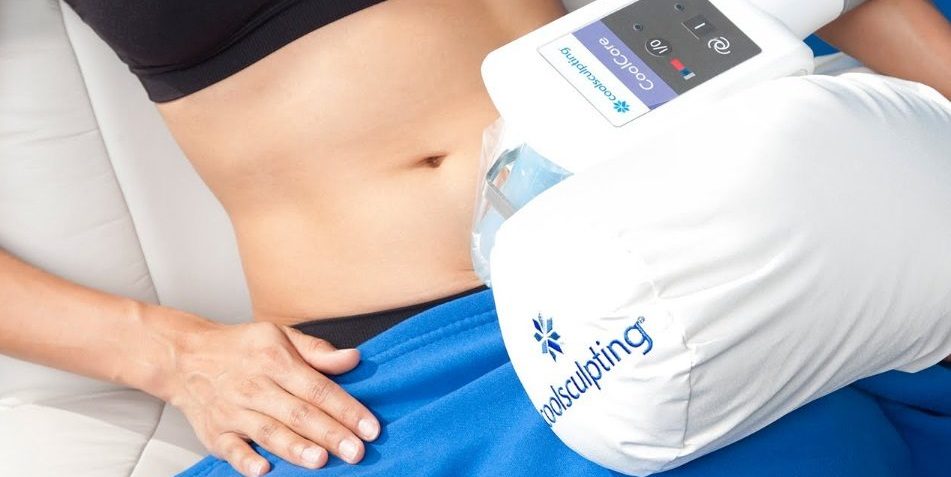With more people getting tattoos every year, it’s not surprising that the demand for tattoo removal treatments has increased exponentially.
According to recent data compiled by the Pew Research Center, some 45 million Americans now sport at least one tattoo on their bodies. No longer the sole domain of bikers, sailors, and unsavory characters, people from across the social spectrum are lining up to have images etched in to their skin, regardless of age, ethnicity or gender.
Some want to commemorate an event, place, or person, while others see their skin as a blank canvas for tattoo artists to work on. “Many tattoos are very thoughtful,” says Dr. Jon Mendelsohn, FACS of Advanced Cosmetic Surgery & Laser Center in Cincinnati, Ohio, “while others, well, not so much. When someone realizes the ink tribute they had done on their chest for their girlfriend Mary was more permanent than the actual relationship, which ended two years ago, the process of how best to get rid of it begins.”
Approximately 11 per cent of Americans with tattoos already have, or are in the process of getting, at least one tattoo removed, while another 17 per cent report they regret being tattooed in the first place. With more people getting tattoos every year, it’s not surprising that the demand for tattoo removal treatments has increased exponentially.
One common approach is the cover-up method, which simply involves inking a new design over an existing tattoo to obscure what’s underneath. This option has its limitations, however. As Dr. Ross VanAntwerp, medical director at the Laser Center of Maryland in Severna Park, Maryland, points out, many adults choose to have their tattoos removed not because they no longer like them, but because they can make securing employment a lot more difficult.
“People with tattoos on their neck or hands don’t even qualify for the military,” explains VanAntwerp. “So long as their tattoos are visible when they’re in uniform, they won’t be considered for service.” Negative attitudes toward tattoos might have lightened somewhat in recent years, but many employers still discriminate against tattooed candidates.
Acid Tattoo Removal
One new approach to tattoo removal is referred to as acid de-tattooing, a technique often performed by tattoo artists themselves. “It’s done with a tattoo gun and acid solution,” VanAntwerp explains. “The tattoo needle is filled with the acid and applied under the skin. This dissolves the color of the original ink, causing little areas of necrosis in the skin – sloughing in spots – which clears the color of the tattoo.”
The downside to this method is it can leave textural changes on the skin. So while the color of the tattoo is rendered invisible, raised scars matching the tattoo’s shape may remain. Another downside is that some patients report experiencing burning from this method.
Q-Switched Laser
The most common tattoo removal technology in use today is the Q-switched laser, which creates heat under the skin to inflame skin cells, causing them to absorb the ink. Removing tattoos this way typically requires several 15-minute appointments spaced six to eight weeks apart, with each actual treatment lasting around 90 seconds.
“This process causes the ink to gradually fade with each treatment. The laser is attracted to the colors in the artwork and the inks heat up,” says VanAntwerp. “It generally takes six to eight treatments for full removal.”
Since the laser “feels like several pops of hot grease on the skin if not anesthetized,” he adds, most practices take steps to make patients comfortable. VanAntwerp’s patients come in for treatment with lidocaine cream already applied to the tattoo to numb the area. Then, the medical staff injects additional lidocaine around the artwork. Once finished, a dressing is applied with antibacterial ointment to improve healing and minimize discomfort.
Though some physicians might consider the Q-switched laser to be an antiquated method, it is still in use. The total price can be many thousands of dollars, depending on the size of and how many tattoos are being removed. Tattoo removal with the Q-switched laser can take 10-15 sessions over about 6-8 weeks.
Picosecond Lasers
Another popular technology to remove unwanted body ink is the picosend laser, which employs light pulses one thousand times faster than the Q-switched technology, reducing the ink’s color in even less time.
“PicoSure uses less heat,” says Mendelsohn, “and works much like a jack hammer under the skin to break up the ink and allow it to be reabsorbed.” Consequently it’s much more effective and only requires half the time of the older technologies. “Getting a tattoo hurts more than the tattoo removal,” he assures.
Pricing for tattoo removal with a pico laser is typically based on square inches and on the complexity of the tattoos. Many doctors charge $50-$60 per square inch each session, sometimes with a minimum of $200-$300.

Perfluordecalin (PFD) Patches
Yet another recent technology to remove unwanted ink and speed up the entire process is the PFD patch. Perfluordecalin (PFD) is a substance that changes the optics of the skin so lasers can penetrate deeper, while also permitting doctors to perform multiple treatments per session. The patch is placed over the top of the tattoo during treatments, clearing the gas that builds up in skin tissue.
“With the gases cleared multiple laser passes can occur in one visit – as many as three per visit,” says VanAntwerp. “With more treatments in fewer sessions, PFD dramatically accelerates the process so patients see quicker results.”
The price of perfluordecalin (PFD) patches is often included with the price of laser treatment since it is used in conjunction with this type of treatment. Ask your doctor for more information.
Tattoo Removal Costs
Generally speaking, the cost of having a tattoo removed depends on the following factors:
- Square inch size of the area treated
- Number of treatments and technique employed
- The color and type of ink used
- The provider’s level of experience
Because of this, you can expect to pay anywhere from a few hundred dollars to several thousands.
Mendelsohn says that the cost per visit ranges between $100-$400, while VanAntwerp estimates that a 2″x 2″ “standard mom tattoo” typically costs between $1,000-$1,200 to remove.
The larger and more intricate the tattoo, the higher the cost to remove it. “A tattoo sleeve on an arm could easily run you $5,000-$6,000,” notes VanAntwerp. “The only time tattoo removal is covered by insurance in the U.S. is when the tattoos being removed were originally applied as part of breast cancer treatments, created to mark the radiation ports.”
At the same time, financing options for tattoo removal are generally available. And when you stop to consider the potential employment opportunities denied you as a result of your visible tattoos, a couple thousand dollars to be rid of them might not be such a bad investment after all.









